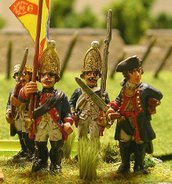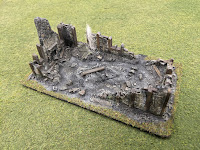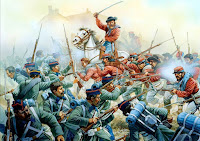Followers of my blog may have noticed after a very active spring and summer, I was AWOL for the late summer and fall. I've been dealing with a significant health issue with my back that has unfortunately significantly hampered my ability to sit up at the painting table. As 2024 comes to a close, things are starting to improve and the physical therapy has been helping. Proof is here in this two-stands of artillery for my 1859 Austrian army for Chocolate box wars. The crews are figures from Piran's Warriors (
https://piranswarriors.co.uk) contract painted by the owner, Terry Birmingham (piranswarriors@gmail.com) who I contracted paint a sizeable number of figures for this army. I can highly recommend both his figures and him as a contract painting service.
The guns are from
Perry Miniatures and were painted by me. Basing is per
Ed M's basing specifications for
Chocolate Box wars. On the rear of the stands I put some magnetic sheet to allow for labels to be swapped in as necessary.
Here is a photograph of a 'standard' Austrian army for Chocolate box Wars. Left to right front row: Grenadiers (posing as guard), Jagers fulfilling the lights with Advanced Weapons slot, four line infantry, and Grenzers filling out the light infantry slot. Back row an officer, artillery battery and light cavalry, in this case lancers. This is part of the total force that I've collected. My plan is to have two armies large enough for two-player teams for group play - Austrians and Garabaldists.

Here the complete force adding a second unit of Jagers, two more line infantry, the second of the two batteries shown above, two sub-commanders and the full compliment of 9 stands of cavalry, three each of Kuriassers, Hussars and Uhlan lancers. Of these the units painted by me were the Grenadiers, Grenzers, pennants for the Uhlans and the artillery pieces. The balance was painted by Terry from Piran's Warriors. Basing was done per the Chocolate Box rules using my standard basing recipe. Considering my health hiccups in the second part of the year, I'm happy to have a completed army to show for the year's work, even if my primary contribution was basing the whole thing up and contracting to have it painted. As the project continues, next up on the painting table are three units of line infantry for my Piedmont army. I started them this past spring, so hopefully I'll finish them before the snow melts this upcoming spring!
May you all have a healthy, happy and enjoyable 2025!











































